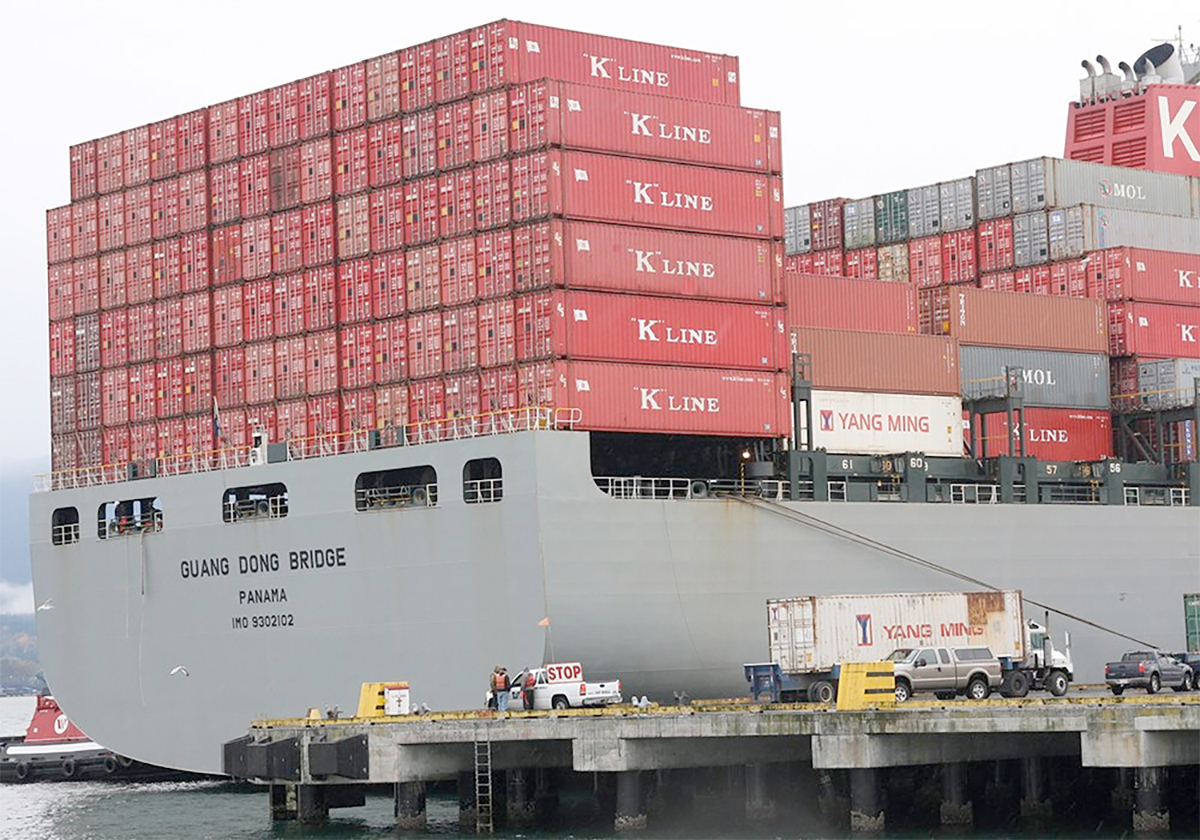REGINA — The pressures on Canadian agriculture point to the need for a forward-looking strategy, said panelists discussing whether the sector’s luck will run out this year.
The immediate reaction to proposed tariffs from the United States was retaliation, but they said the situation could be the impetus for a strategy to take primary agriculture and food manufacturing to another level.
“I’m very concerned that we’re all in the grips of tactics,” said Ted Bilyea, a consultant and trade policy specialist.
Read Also

Saskatchewan dairy farm breeds international champion
A Saskatchewan bred cow made history at the 2025 World Dairy Expo in Madison, Wisconsin, when she was named grand champion in the five-year-old Holstein class.
Retaliatory tariffs provide short-term survival, but he said this could be the time to reduce dependence on the U.S., add value at home or export to different countries.
“This is a time to stand back and say, ‘let’s talk about longer term strategy here,’ ” he said.
Tyler McCann, managing director of the Canadian Agri-Food Policy Institute, said trade diversification was supposed to be a strategy over the last number of years, yet agricultural exports are more concentrated in the U.S. now than 10 years ago.
He said Canadian agriculture has always benefitted from strong fundamentals, such as demand for its production, climate and its location next to the U.S. However, he said the country’s luck may run out this year.
Headwinds include the proposed tariffs, extreme weather, the threat of animal disease, labour challenges, infrastructure, a crumbling rules-based trading system and increasing protectionism around the world. Farm incomes are under pressure from input costs, land prices and production challenges.
“I hope I’m wrong, but I think that 2025 is going to be a real tough year for the sector,” he said.
Kristina Farrell, chief executive officer of Food and Beverage Canada, said luck has masked a growing challenge in that sector, which is Canada’s largest manufacturing industry.
It is seeing declining productivity and competitiveness as Canada lags behind in automation, technology adoption and operational efficiencies, she said during a webinar.
Inadequate infrastructure and an inefficient regulatory framework hinder innovation, and she said the urgency to address these has never been greater.
The question of whether luck has run out should serve as a wake-up call, she said.
“We need to shift toward a forward-looking policy framework that prioritizes enhancing productivity and competitiveness across the industry, both in primary agriculture and in food and beverage manufacturing,” Farrell said.
She said the stakes are high and a successful food manufacturing industry is critical to primary agriculture and the broader economy.
Bilyea said he isn’t sure luck has anything to do with it.
He said Canada’s luck lies with its natural assets, which in a 2013 book were valued at $17 trillion more than those of the U.S.
“The bad luck is that we have not come together to properly put our interests first and develop them,” he said.
A new type of industrial policy is desperately needed, he said.
McCann said the last major evolution in agricultural policy was 25 years ago when the first agricultural policy framework was signed, in part driven by crisis. He said the current climate is one that should provide the same opportunity for change.
“I would have more hope if I heard more from governments and others about what are those types of aggressive actions that we could take domestically to better strengthen our position,” he said.
“Instead, we hear a debate about how big the retaliatory tariff list is.”
Farrell said supports and policies in Canada have been reactive. She said the country should have learned something from the pandemic but apparently did not.
It’s time to look inward to create a strategy that invests across agriculture and food, she said, and create a more business-friendly environment.
Small companies who aren’t export ready make up 92 per cent of the industry, she said.
“They’re just trying to figure out how to sell to big retailers in Canada,” Farrell said, let alone exporting to the U.S. or anywhere else.
Bilyea said there is a bigger problem than exporting south.
“The biggest constraint on the small companies in Canada is not that they can’t export to the U.S. It’s that they can’t bloody export across the country. You’ve got interprovincial barriers like crazy,” he said.
He said Canadians have to get over the idea that they don’t want an industrial strategy and that free trade is everything.
“We’ve got to realize we’re in a different world today, where every country is beginning to work towards national strategies that are essentially industrial strategies,” he said.
The three panelists agreed that the agriculture and food sector has to come together to come up with shared priorities and actions. Bilyea said that means putting interests ahead of values.
“I think if we start doing that in real time, that we will find we create our own luck,” he said.
“We’ve been putting values up there, but you make no progress on values if you don’t have some power behind it. You get the power by extending your interests first.”
















